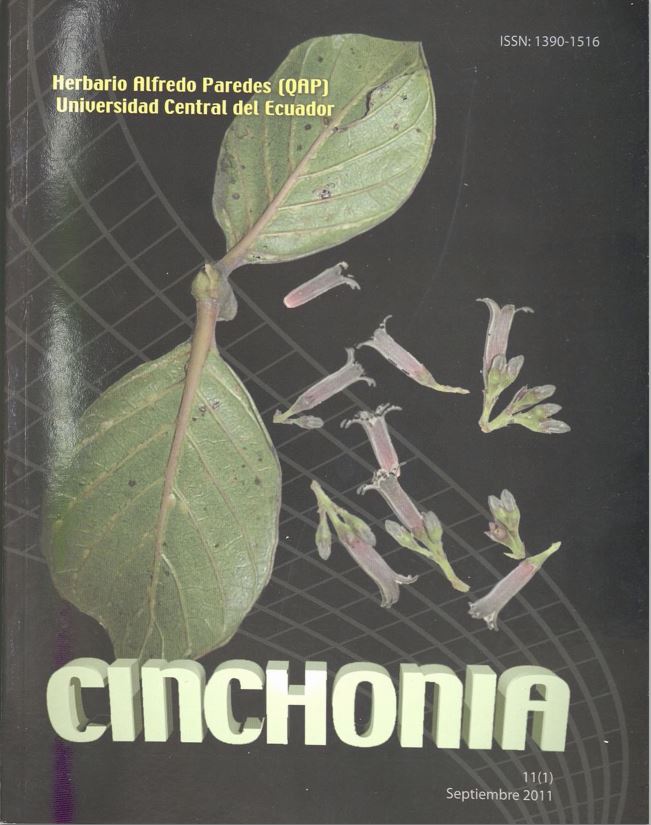Mil y más plantas de la Amazonia ecuatoriana utilizadas por los Secoyas
Contenido principal del artículo
Resumen
Entre los años 2003 y 2008, se realizó la investigación etnobotánica dentro del territorio Secoya, ubicado en la provincia de Sucumbíos en la cuenca del río Aguarico, en las comunidades: Copal de Lagarto Cocha, San Pablo de Cantesiayá y Sehuaya. Las comunidades están bajo los 300 msnm en la zona de vida Bosque húmedo tropical. La obtención de la información etnobotánica se realizó mediante la aplicación de varias metodologías de estudio botánico, como: transectos, parcela permanente, mareaje de un sendero etnobotánico y colecciones al azar, mediante la presencia in situ de los miembros Secoyas más adultos. En todos los muéstreos, se realizaron colecciones para herbario, los mismos que montados, etiquetados e identificados taxonómicamente, se encuentran depositados en el Herbario Alfredo Paredes (QAP) de la Universidad Central del Ecuador. Las 1.005 especies, incluidas en 543 géneros y 150 familias, mayormente corresponden a la división Magnoliophyta con la clase Magnoliopsida, seguido de Bryophyta. Las más abundantes son las especies silvestres, luego las cultivadas e introducidas. Los nombres Secoya de las plantas, son en su mayoría monomiales, seguidos de binomiales, trinomiales y tetranomiales. Los usos alimento animal y combustible son los más importantes, luego alimenticio, medicinal, construcción y comercial. Las especies del hábito arbóreo y herbáceo son los más registrados como útiles, después arbustos, lianas y epífitas. El verticilo más utilizado es el tallo, seguido de fruto, hoja, planta entera, corteza, semilla y raíz. Estos resultados evidencian el gran conocimiento de los Secoyas sobre la biodiversidad de los bosques tropicales.

